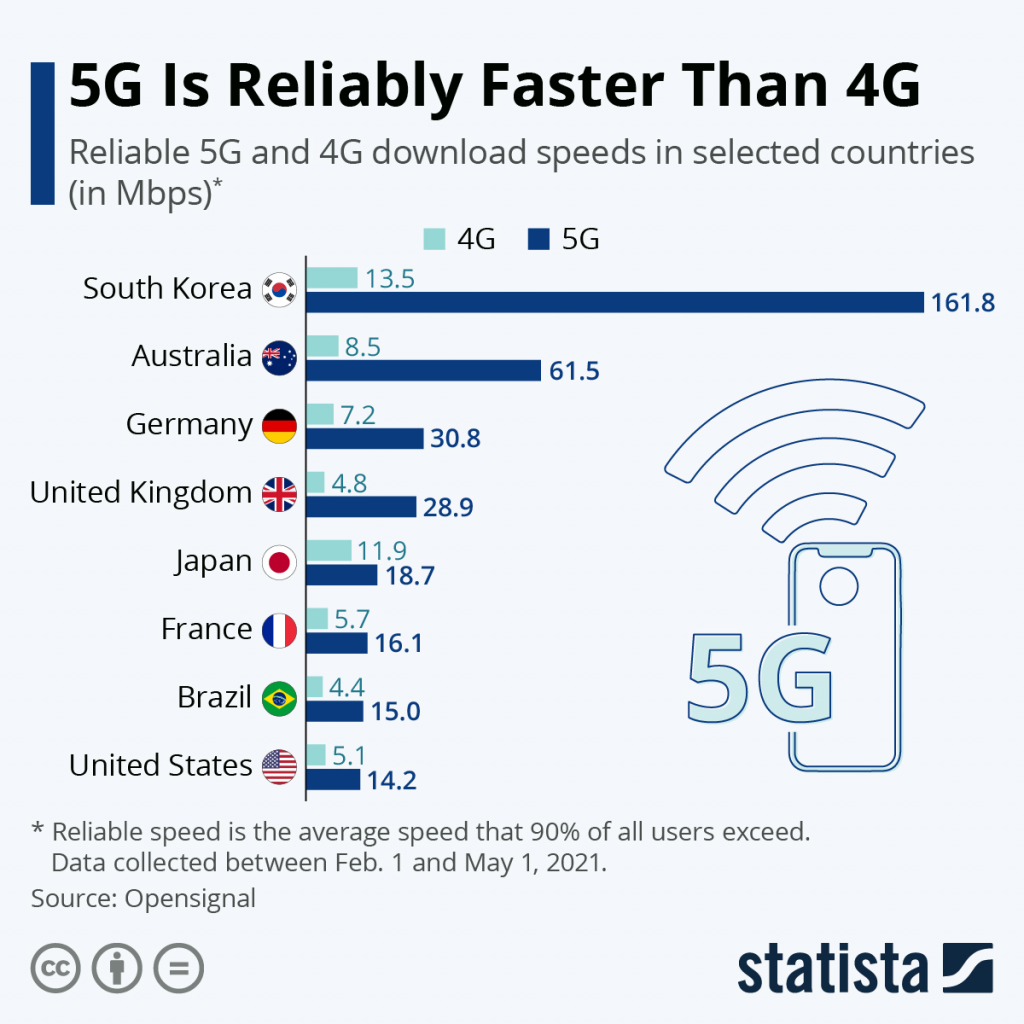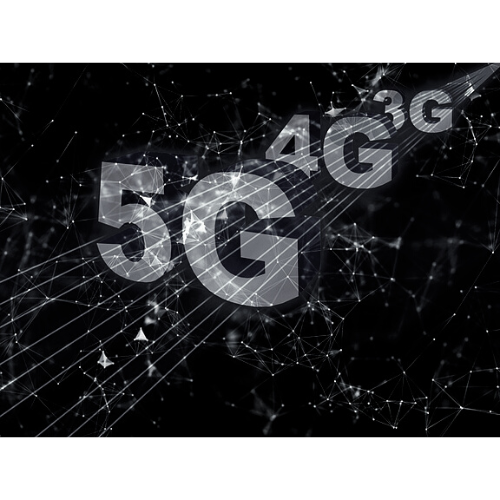5G is the fifth generation of mobile technology that is gradually replacing 4G worldwide. It is a network technology that promises data rates up to 20 times faster than 4G and latency reduced by up to 1/10. These features make 5G ideal for a range of use cases, both for businesses and individuals.
With peak download speeds exceeding 500 Mbps, 5G promises to solve smartphone users’ speed problems once and for all. But does the new 5G technology really end the buffering effect of video streams and annoyingly slow downloads?
Contents
Mobile connectivity
Mobile connectivity services tend to be less reliable than fixed broadband because of the technological and logistical challenges of cellular services. For example, users are constantly moving around, and wireless technologies have lower capacity than fixed broadband technologies such as fiber and suffer more from congestion.
To find out how reliable 5G’s speed advantage is, mobile network company Opensignal analyzed the “reliable download speed,” or the average download speed that 90 he users in a country exceed, measuring the real advantage of 5G over 4G.

Although the speeds reliably achieved by 5G users are significantly lower than peak speeds or even average download speeds, they are still consistently and significantly higher than the speeds reliably achieved by 4G connections.
On average, the reliable speed of 5G was more than 7 times faster than that of 4G in the 20 countries included in the study.
Interestingly, the study also reveals the huge differences in network speeds between countries. While 90 he South Korean users enjoy an average download speed above 161.8 Mbps, the reliable speed of 5G in the United States is only slightly higher than South Korea’s 4G speed (14.2 vs. 13.5). This is not to say that U.S. 5G users do not achieve much higher download speeds-the average ranges from 47.7 to 71.3 Mbps depending on the provider-but they do not reliably achieve these speeds.
What are the key features of 5G?
5G is the next generation of mobile network technology and offers a number of key features and improvements over previous generations of mobile networks. Some of the key features of 5G are:
High Speed: 5G offers much higher speeds than previous generations of mobile networks, with peak speeds of up to 20 Gbps. This enables more efficient and faster transmission of data, which can enable new and better services, such as high-definition video streaming and virtual reality.
Low Latency: 5G has significantly lower latency than previous generations of mobile networks, which means there is less delay in data transmission. This can improve the user experience and enable new applications, such as real-time gaming and remote surgery.
High Bandwidth: 5G can support a much higher number of devices per unit area than previous generations of mobile networks, which means it can handle more traffic in crowded areas. This can be useful for applications that require a large number of connected devices, such as smart cities and the Internet of Things (IoT).
Better Energy Efficiency: 5G is more energy efficient than previous generations of mobile networks, which means it can provide better performance using less energy. This can help reduce the environmental impact of mobile networks and improve the battery life of mobile devices.
Increased Security: 5G includes advanced security features, such as end-to-end encryption and secure access to network services, which can help protect against cyber attacks and other threats. This can be important for applications that require a high level of security, such as financial transactions and critical infrastructure.
Will 5G improve our lives?
It is expected that 5G will have a number of key use cases where it can improve our lives by providing faster speeds, lower latency and greater security than previous generations of mobile network technologies.
Some examples where 5G can improve our lives are:
High-definition video streaming: the high speed and low latency of 5G will enable the streaming of high-definition video without buffering or delay. This can improve the user experience and make it possible to watch high-quality video on mobile devices, even in crowded or high-speed areas.
Virtual reality: the low latency and high capacity of 5G will enable immersive virtual reality experiences, which can allow users to connect with others and experience new environments in real time. This can be useful for applications such as games, education, and entertainment.
Remote surgery: the low latency and high capacity of 5G will allow remote surgery to be performed with high accuracy and low delay. This can enable doctors to operate on patients remotely, which can be useful in cases where the patient is in a remote location or it is not safe for the doctor to be present.
Smart cities: the high speed and low latency of 5G will enable the development of smart cities, where a wide range of devices and sensors are connected to the network. This can enable new applications, such as traffic, energy and public safety management, which can improve the quality of life for city dwellers.
Internet of Things (IoT): the high capacity and enhanced security of 5G will enable the widespread adoption of IoT, which involves connecting a wide range of devices and sensors to the network. This can enable new applications, such as home automation, predictive maintenance, and asset tracking, which can improve efficiency and quality of life for citizens.
In brief (summary)
5G is revolutionizing the way we connect. This advanced network system surpasses its predecessor, 4G, in a number of key aspects.
Imagine a world where file downloads and access to online content are 20 times faster. This is the promise of 5G. The innovative data speeds offered by this technology are a game changer, opening the door to new possibilities for online browsing and interaction.
But that’s not all. 5G also offers up to 10 times less latency than 4G. Latency is that minimal, often imperceptible delay that occurs between sending and receiving a signal. Thanks to 5G, activities such as online gaming or live video calling become seamless experiences.
Another advantage of this technology concerns connection capacity. 5G can handle more connected devices simultaneously while keeping performance at a maximum. This detail is of crucial importance, especially for the so-called Internet of Things (IoT), a network in which every device, from the refrigerator to the phone, can be connected and communicate.
In addition, 5G makes use of a new range of radio frequencies, unlike 4G, which relies on low- and medium-power frequencies. This innovation enables 5G to provide wider coverage and more effective data transmission, ensuring a stable and reliable connection even in crowded places or isolated areas.
In conclusion, 5G represents a significant technological leap from 4G, thanks to its superior data transmission speed, reduced latency, and greater capacity to connect devices. Whether it’s downloading a movie in seconds or flying a drone in real time, 5G is opening the door to a future of fast and reliable connections.
How about you? Have you already made the jump to 5G with your cell phone? Have you noticed the difference?
Sources: 5G Is Reliably Faster Than 4G, Quantifying the speed bar for a reliable mobile experience
